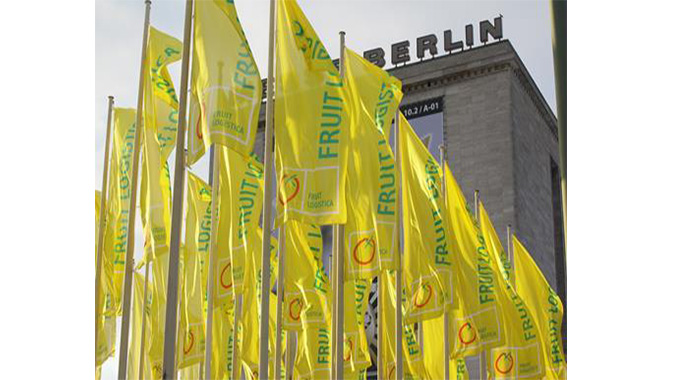Exports surge to US$2,13bn…..Country earnings nudged up 39pc in four months

Prosper Ndlovu, Business Editor
ZIMBABWE’S exports continue to increase with the country recording a 39 percent growth to US$2,13 billion earnings between January and April this year compared to the same period last year, according to ZimTrade.
New markets are emerging such as Jordan where Zimbabwe recorded first exports this year amounting to US$11,5 million while exports to the United Arab Emirates (UAE) grew by almost 98 percent from US$359 million in 2021 to US$710 million in 2022, said the agency.
The biggest movers are processed food exports, which increased by 41,3 percent from US$16,9 million in 2021 to US$23,98 million in the first four months of 2022.
The mining sector, which is the country’s largest foreign currency earner grew by 30,6 percent from US$1,29 billion in April 2021 to US$1,68 billion by April 2022.
Similarly, leather and leather products exports increased by 35,5 percent, from US$626 000 last year to US$849 000 under the comparable period this year.
Exports of hides and skins also grew by 44,67 percent, from US$4,04 million between January and April last year to US$5,84 million during the same period this year, said ZimTrade.
Building and construction exports increased from US$11,7 million in 2021 to US$12,5 million this year translating to 7,2 percent increase.

Major exported products in the sector were of unglazed ceramic flags, paving, wall tiles and mozaic cubes, which increased from US$1,3 million in April 2021 to US$4,9 million this year.
Manufactured tobacco exports increased from US$15 million in April 2021 to US$21,3 million this year with raw tobacco exports increasing value from US$129,5 million to US$298,3 million.
The period has also seen trade deficit narrowing down to US$487 million when compared to a deficit of US$699 million recorded during the prior corresponding period.
Citing latest official figures from Zimstat, the country’s trade promotion and development agency said the US$2,13 billion four-month milestone compares favourably with US$1,53 billion recorded during same period in 2021.
“Exports of manufactured or valued added products increased by 32,24 percent from US$85,8 million in April 2021 to US$113,5 million in April 2022,” said ZimTrade in an export analysis report issued Monday.
Imports increased by 17,3 percent to US$2,61 billion during the period under review, from US$2,23 billion in 2021.
“From the structure of the country’s imports, it is encouraging that the bulk of imports were raw materials and capital equipment being channelled into the local manufacturing sector to boost production.”
Other top import products were fuels and electricity, vehicles and motorcycle parts.

Fuel
The country’s positive growth in exports follows a sustained upward trend over the past year, that has seen Zimbabwe exceeding the 10 percent export growth target required under the National Export Strategy.
“This resurgence in growth is on the back of President Mnangagwa’s re-engagement and economic diplomacy approach, that continues to yield positive results on the export front,” said ZimTrade.
Over the past few years, President Mnangagwa has been clear on re-engagement agenda, that the country needs to embrace its relations with countries in Africa and beyond and turn them into economic gains.
This has seen the Second Republic instituting several measures to unlock export opportunities across the world following years of isolation, leveraging on Zimbabwe’s foreign relations and its position in the region as well as areas it enjoys competitive and comparative advantage.

President Mnangagwa
Through economic diplomacy, ZimTrade said Zimbabwe continues to unlock non-traditional markets, with growing exports to markets such as (UAE), China, Belgium, Italy and Jordan.
The country is reaping positive results from activities being implemented by ZimTrade to develop export capacities of local companies and promote Zimbabwean products beyond the borders.
ZimTrade said processed food exports were showing signs of solid recovery after a drop in sugar exports in 2021.
This saw sugar exports increasing from US$1,4 million to US$8,22 million with baked products exports jumping from US$1,8 million to US$2,2 million.
“The processed foods sector is one of the key sectors earmarked for continued export growth this year following increased engagements between Zimbabwean manufacturers and producers in the region and beyond,” said the agency.
ZimTrade recently hosted the ‘Zimbabwe Outward Seller Mission to Lubumbashi, DRC where participating companies were told of the huge potential of local products in the market.
During the meeting, buyers indicated that Zimbabwean products were known for better quality and were keen to source these from local producers to match price and sustain demand.

Herbs
“These are the same sentiments shared by buyers in Dubai during the Zimbabwe-Dubai Business Forum held earlier this year, where potential was noted for products such as cordial drinks, biscuits, sauces and condiments, dairy products, cereals and granola, dried fruits and vegetables, sweets, herbs and spices, and natural oils,” said ZimTrade.
In order to further increase exports of the processed foods into the region, ZimTrade is this week leading the sector in taking part at the Zimbabwe Outward Seller Mission to Manica Province of Mozambique.
There have also been targeted efforts to expose locally produced leather and leather products to non-traditional markets such as Asian and Middle-East countries.
ZimTrade facilitated for sector players to participate at the Asia-Pacific Leather Fair, which ended on 2 April in Dubai, where they engaged with potential buyers from across the world who were impressed by the quality of products that were on offer.
The country is targeting to drive more exports to regional markets such as Botswana where Zimbabwean goods have been performing well over the past years and is assured of quick wins.
“Local manufacturers need to unlock new markets with potential such as Mozambique, Malawi, DRC, Namibia and Angola,” said ZimTrade.
“Although export values are still low for the packaging and stationery sector, it has recorded a huge jump in the period under review, with exports growing from US$2,4 million in April 2021 to US$5,7 million in 2022.
“The 138 percent growth is indicative of the potential in the sector where potential lies in products such as cartons, boxes, paperboard, paper, paperboard and corrugated paper.”
The agency has urged players in the sector to increase their exports to utilise the Zimbabwe Packaging Portal, which provides a competitive edge for the local manufacturers as they receive recognition from the international market.
Economic experts have urged increased momentum towards value-addition of minerals, which will allow the country to realise full value from mineral exports while creating jobs and improving livelihoods of its people.

Arts and crafts
Meanwhile, the figures indicate that arts and crafts exports also decreased by 12,5 percent from US$3,04 million in April last year to US$2,7 million this year.
Horticulture sector exports also dropped by 10 percent during the period to US$13,1 million from US$14,6 million last year.
In this regard ZimTrade said targeted export capacity development and promotion programmes for the sectors were underway to improve exports as the year progresses.
So far, the agency has facilitated for sector players to take part in two global exhibitions – the recent Fruit Logistica in Germany and MacFrut Fair in Italy where participating exporters engaged buyers who indicated willingness to import from Zimbabwe with a key focus on organic products.

Fruit Logistica
The sector players will also take part at the Zimbabwe Outward Seller Mission to the United Kingdom (UK) that will be held later this year.
Aquaculture exports declined by 35 percent during the period under review from US$364 000 last year to to US$236 000 this year.
ZimTrade said the trend shows the negative effects of the Covid- 19 pandemic on cold-chain supply as most of the Asian markets gazette stringent requirements for exports to that market.











Comments